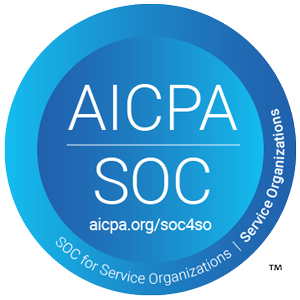The rate of innovation today is accelerating—fast. Long established companies are getting disrupted, and in many cases threatened with obsolescence. To defend themselves and stay ahead of the game, even the most successful companies are investing in smarter innovation strategies. Which means that corporate innovation is not only happening more rapidly, it’s becoming more sophisticated. And that demands evolved software that can keep up with this rate of change.
But too often, companies get stuck with overly simplistic products to manage their innovation. That’s because most innovation management software vendors offer just one generic platform—cobbled together—thereby claiming to be all things to all innovation leaders. They unwisely presume that innovation is a single process defined by a loose collection of activities, ignoring the crucial fact that innovation management progresses along a journey of stages, each overseen by a leader in a distinct role.
The Failure of Generic “Franken-platforms”
In our years of pioneering this software category, we’ve worked with hundreds of companies who have been successful at managing innovation. We’ve watched corporate innovation evolve as more companies seek to fully engage their employees, foster thriving innovation cultures, and enact far-reaching organizational change—all to sharpen their competitive edge and pre-empt disruption. Managing and scaling these endeavors has become increasingly more complex and nuanced. None should be tackled homogeneously.
Yet other vendors make exactly that mistake. They treat innovation management generically, developing broad, general-purpose software that requires significant customization to configure, which drives up costs and complicates usability. When customers attempt to scale their efforts, they suffer long timelines and lower success rates because key business processes and best practices haven’t been integrated directly into the software. In the end, customers are left to figure things out themselves with these horizontal Franken-platforms—brittle, bug-ridden, and bloated with features and options. Rather than moving innovation forward, users get distracted with just trying to make the software work. The entire innovation process becomes compromised.
Most innovation management software is cobbled together,
creating Franken-platforms that are brittle, bug-ridden, bloated, and require costly customization to configure.
A Clear Roadmap to Innovation Success
Innovation on its own is hard enough—managing it shouldn’t make it harder. In our experience, when companies map their activities to an innovation journey, they strategically plot a course for a destination where a culture of innovation thrives, yields significant business impact, and drives innovation further and faster.
Corporate innovation proceeds along a journey where, with every success it achieves, a company moves further along in its efforts:
building teams, adding resources, engaging in more complex initiatives.
Once a company embarks on its journey, it engages in activities that build on one another. With every success it achieves, the company progresses further along in its efforts: building teams, adding resources, engaging in more complex initiatives stage by stage.
Stewarding the success of every stage is an innovation leader with a distinct role, each with a different job and unique set of requirements. Treating these roles as one and the same, as most vendors do, fails to appreciate the complex processes unique to where an organization is along its innovation journey. The demands of running problem-solving idea challenges differ from the job of overseeing project teams in an innovation lab; and both of those require a completely different mindset from managing a public open innovation forum or tracking digital transformation projects.
The job of corporate innovator isn’t homogenous, nor should its software be. While we once advocated this horizontal approach, it was in our early days of establishing the innovation management industry. As we continue to trailblaze this space, we’ve moved on while other vendors hold on to a dated view. Informed by customer experiences and insights, we’ve seen how the generic approach of other developers—with its lack of a clear point of view on corporate innovation—falls short and does innovative companies a disservice.
Software Empowering Innovation Leaders in Every Role
The Brightidea Innovation Cloud, now in its second generation, embodies our role-based philosophy of corporate innovation. It is designed to meet the needs of the four different roles in innovation management, offering a distinct product for each stage of the innovation journey.
- Head of Innovation Programs fosters a culture that engages employees in innovation, and quickly generates business impact from their best ideas
- Head of Innovation Labs incubates “the next big thing,” funding only the most promising projects and sunsetting others quickly
- Head of Innovation Ecosystem integrates external innovation into the organization by connecting to and incorporating outside resources
- Head of Company-wide Transformation revamps the entire organization through cultural, digital, or organizational transformation
Each stage of the innovation journey is overseen by a distinct role.
With each product, we provide the relevant role with a unique package of software, services, and how-to assets that will drive success and pave the way for the journey ahead. And, as always, our products are designed from the ground up to provide a simple, autonomous, streamlined experience that works right out of the box, without requiring costly consultants to configure.
Are You Ensuring the Best Ideas Win?
With every customer experience, we see where the industry is headed. The companies that focus on innovation as a journey, consider the requirements of the stage they’re in, and define the role needed to navigate it are far more successful than those who don’t. Their successes depend on cultivating a true idea meritocracy that enables the best ideas to win, and having the tools to drive greater impact from their innovation efforts. To that end, our strong point-of-view is that building four distinct products for four distinct roles is the modern, evolved way to serve innovation managers. We’re confident that this role-based approach is the most significant step in championing the roles of corporate innovation leaders and reinforces our belief that innovation is too important to be left to chance.

